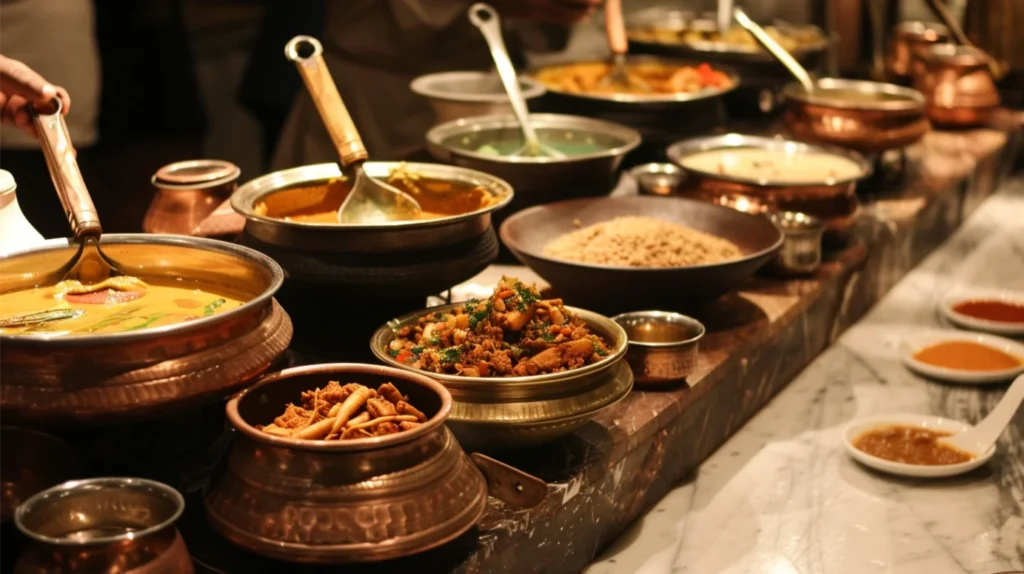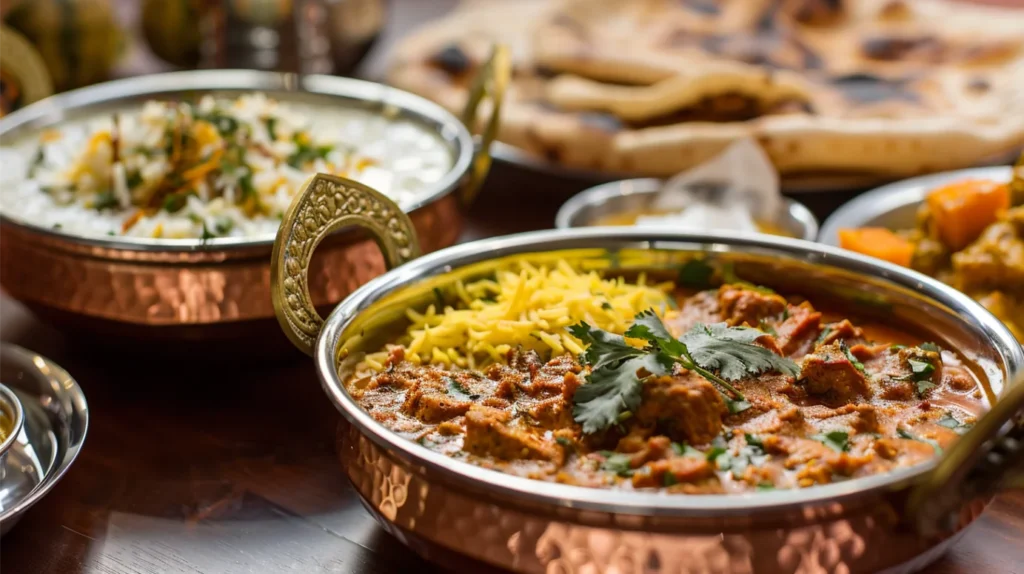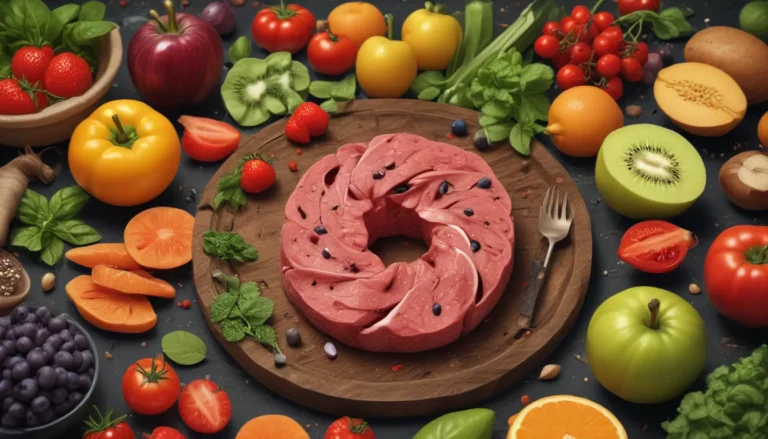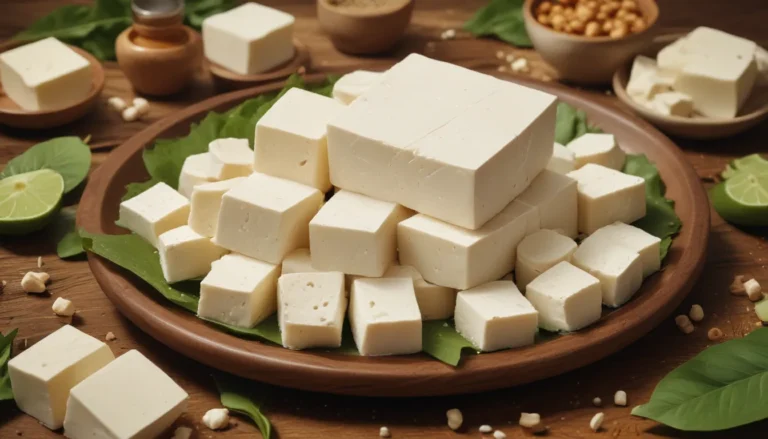The pictures in our articles might not always show exactly what the text is talking about. We use these images to make the article more interesting and eye-catching. They are there to add to the text, but not to replace it or show every detail.
Introduction
Indian cuisine is a vibrant tapestry of flavors, spices, and culinary traditions that have captivated food enthusiasts worldwide. From the fiery curries of the north to the coconut-infused delicacies of the south, Indian food is a celebration of diversity and richness. In this article, we'll explore 19 intriguing Indian food facts that will tantalize your taste buds and leave you craving for more.
Join us on a flavorful journey through the colorful world of Indian cuisine as we uncover the origins of iconic dishes, the significance of spices, and the cultural nuances that make Indian food so special. Whether you're a seasoned Indian food enthusiast or a curious beginner, these facts will deepen your appreciation for this incredible culinary tradition.
Key Takeaways
- Indian cuisine is incredibly diverse, with each region offering unique flavors and cooking techniques.
- Spices play a crucial role in Indian cooking, adding depth, aroma, and health benefits to dishes.
- India has the largest vegetarian population in the world, resulting in a wide variety of plant-based delicacies.
- Street food is an integral part of Indian culinary culture, offering flavorful and affordable treats.
- Traditional cooking methods, like the tandoor oven, contribute to the distinct flavors of Indian cuisine.
1. A Culinary Melting Pot

India's vast geographical diversity has resulted in a rich tapestry of culinary traditions. Each region boasts its unique flavors, ingredients, and cooking techniques. From the robust curries of North India to the fragrant biryanis of the South, Indian cuisine offers a gastronomic adventure like no other.
2. The Symphony of Spices
Spices are the heart and soul of Indian cooking. They add depth, aroma, and character to dishes, creating complex flavor profiles that Indian food is renowned for. Common spices include:
- Turmeric
- Cumin
- Coriander
- Cardamom
- Cinnamon
- Cloves
These spices not only enhance taste but also offer numerous health benefits, making them essential ingredients in Indian cuisine.
3. Vegetarian Paradise
India is home to the largest vegetarian population in the world. This has led to the development of an incredible variety of plant-based dishes. From sumptuous biryanis to soul-warming desserts, vegetarian options in Indian cuisine cater to diverse palates and showcase the country's culinary creativity.
4. Street Food Extravaganza
Indian street food is a sensory delight that tantalizes taste buds with its savory and spicy offerings. Popular street foods include:
- Pani puri
- Chaat
- Vada pav
- Samosas
These affordable and flavorful treats are an integral part of India's food culture, offering a glimpse into the country's culinary diversity.

5. The Magic of Tandoor
The traditional tandoor oven holds a special place in Indian cooking. This clay oven imparts a distinctive smoky flavor and texture to dishes like:
- Tandoori chicken
- Naan bread
- Kebabs
The intense heat of the tandoor creates a unique culinary experience that's hard to replicate with other cooking methods.
6. Rice: The Staple Grain
Rice is a cornerstone of Indian cuisine, featuring prominently in various dishes. Its versatility is showcased in:
- Aromatic biryanis
- Comforting desserts like kheer
- Savory side dishes
The adaptability of rice makes it an essential ingredient in Indian cooking, offering endless possibilities for culinary creativity.
7. Ayurveda and Indian Cooking
The ancient Indian system of medicine, Ayurveda, has significantly influenced Indian cooking. Ayurvedic principles emphasize:
- Balance of flavors
- Use of fresh ingredients
- Medicinal properties of spices and herbs
This holistic approach adds a unique dimension to the Indian culinary experience, focusing on both taste and well-being.
8. Ghee: Liquid Gold
Ghee, a clarified butter with a nutty flavor, is a cherished ingredient in Indian cooking. Used for cooking, flavoring, and as a condiment, ghee adds richness and depth to dishes. It also holds cultural significance, symbolizing prosperity and auspiciousness in Indian traditions.
9. The Diverse World of Indian Breads
Indian cuisine boasts an impressive variety of bread, each with its unique texture and flavor. Some popular types include:
- Fluffy naan
- Flaky parathas
- Crispy rotis
These bread varieties complement the myriad of curries and dishes, adding texture and taste to every meal.
10. Thali: A Complete Meal on a Plate
The concept of thali, a complete meal served on a round platter, showcases the diversity of Indian flavors and textures in a single serving. A typical thali includes:
- Various curries
- Rice
- Bread
- Yogurt
- Dessert
This presentation style offers a harmonious blend of flavors, representing the culinary symphony of Indian cuisine.
11. Spices as Medicine
Many Indian spices are revered for their medicinal properties. For example:
- Turmeric offers anti-inflammatory benefits
- Ginger aids digestion
- Cloves promote oral health
These spices not only enhance the taste of dishes but also contribute to overall well-being, aligning with the holistic approach of Indian cooking.
12. Sweet Indulgence
Indian desserts are a sweet finale to any meal, featuring a range of milk-based confections and festive favorites. Popular desserts include:
- Gulab jamun
- Rasgulla
- Jalebi
- Kheer
The diversity of Indian sweets offers a sensory experience that delights both the palate and the senses.
13. Coastal Coconut Cuisine
India's coastal regions, such as Kerala and Goa, showcase a love affair with coconuts in their cuisine. Coconut is used in various forms:
- Coconut milk
- Coconut oil
- Grated coconut
These ingredients add a creamy and tropical touch to coastal delicacies like fish curry and coconut chutney.
14. Chai: The Beloved Spiced Tea
Chai, or Indian spiced tea, is an integral part of Indian culture. This comforting beverage blends:
- Black tea
- Milk
- Spices like cardamom, cloves, and ginger
Whether enjoyed in the morning or as a soothing evening drink, chai is a flavorful companion for every occasion.
15. Mango Mania
Mangoes are revered as the "king of fruits" in India, symbolizing abundance and prosperity. During the summer season, mangoes take center stage in various forms:
- Cooling mango lassi
- Tangy mango chutney
- Spicy mango pickle
These juicy fruits celebrate their culinary and cultural significance in Indian cuisine.
16. Mughlai Cuisine: A Royal Legacy
Mughlai cuisine, introduced by the Mughal emperors, has left an indelible mark on Indian cooking. This culinary style is known for its:
- Aromatic biryanis
- Succulent kebabs
- Rich kormas
Mughlai cuisine continues to be savored and celebrated, showcasing a delightful blend of Persian and Indian flavors.
17. Ayurvedic Spices: Healing Through Food
Ayurveda advocates the use of spices for their healing properties. Some examples include:
- Turmeric for its anti-inflammatory properties
- Ginger for digestive health
- Cinnamon for blood sugar regulation
Incorporating these spices into Indian cooking not only enhances flavor but also promotes overall well-being.
18. South Indian Breakfast Delights
South Indian cuisine has given the world popular breakfast staples that have gained global recognition. Two notable examples are:
- Dosas: Thin pancakes made from fermented rice and lentil batter
- Idlis: Steamed rice cakes
These dishes are typically enjoyed with an array of chutneys and sambar, showcasing the unique flavors of South Indian cuisine.
19. Festive Food Culture
India's diverse food culture is punctuated by numerous food festivals that honor regional traditions and culinary heritage. From Makar Sankranti to Diwali, these festivals bring communities together to indulge in traditional delicacies and celebrate the richness of Indian cuisine.
Conclusion
As we conclude our flavorful journey through the tantalizing world of Indian cuisine, it's clear that Indian food is much more than just a meal – it's a celebration of culture, tradition, and culinary artistry. The 19 Indian food facts we've explored offer just a glimpse into the rich tapestry of flavors, techniques, and traditions that make Indian cuisine so special.
Whether you're savoring the complex spice blends, indulging in street food delights, or exploring the health benefits of Ayurvedic cooking, Indian cuisine offers something for everyone. Its diversity, depth, and ability to cater to various dietary preferences make it a truly global culinary powerhouse.
So, the next time you enjoy an Indian meal, remember the centuries-old traditions, regional influences, and cultural nuances that have shaped these delectable dishes. Let each bite be a celebration of India's rich culinary heritage and an invitation to explore more of this fascinating cuisine.
FAQ: Common Questions About Indian Food
Q: What are some must-try Indian dishes?
A: Some popular Indian dishes to try include butter chicken, biryani, masala dosa, samosas, and gulab jamun.
Q: Is all Indian food spicy?
A: While Indian cuisine is known for its use of spices, not all dishes are necessarily hot. There are plenty of mild and flavorful options available as well.
Q: What are some common ingredients used in Indian cuisine?
A: Common ingredients include spices like cumin, coriander, turmeric, and cardamom, as well as lentils, rice, yogurt, and various vegetables.
Q: Are there many vegetarian options in Indian cuisine?
A: Yes, Indian cuisine offers a wide variety of vegetarian dishes, influenced by the rich vegetarian traditions of different regions in India.
Q: What is the significance of spices in Indian cooking?
A: Spices not only add flavor and aroma to Indian dishes but also have various health benefits. They are believed to aid digestion, boost immunity, and have medicinal properties.






